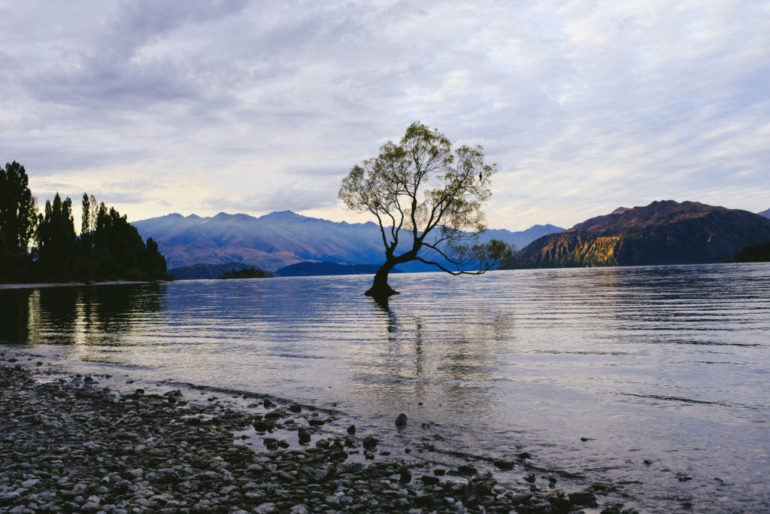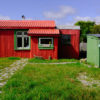It’s impossible to miss social media’s impact on traveling, especially in a tourism-heavy country like New Zealand. Visitor centers feature Instagram trails and maps. Hikers queue for hours to take a classic photo at Roy’s Peak, a famous hike in Wanaka. Local lavender farms charge for entry and feature picture props like lavender tractors or bright purple doors in the flower fields. The highway to Mount Cook is haphazardly lined with cars on the side of the road, just so visitors can take pictures of themselves walking on the highway, with their friends as lookouts to make sure they don’t get hit by oncoming traffic.
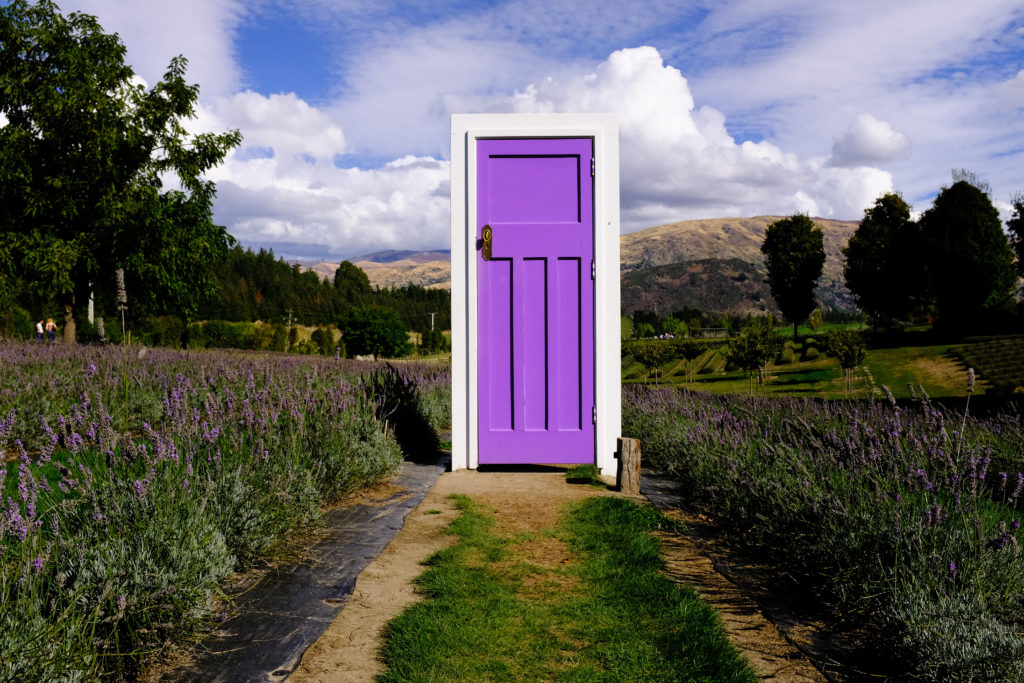
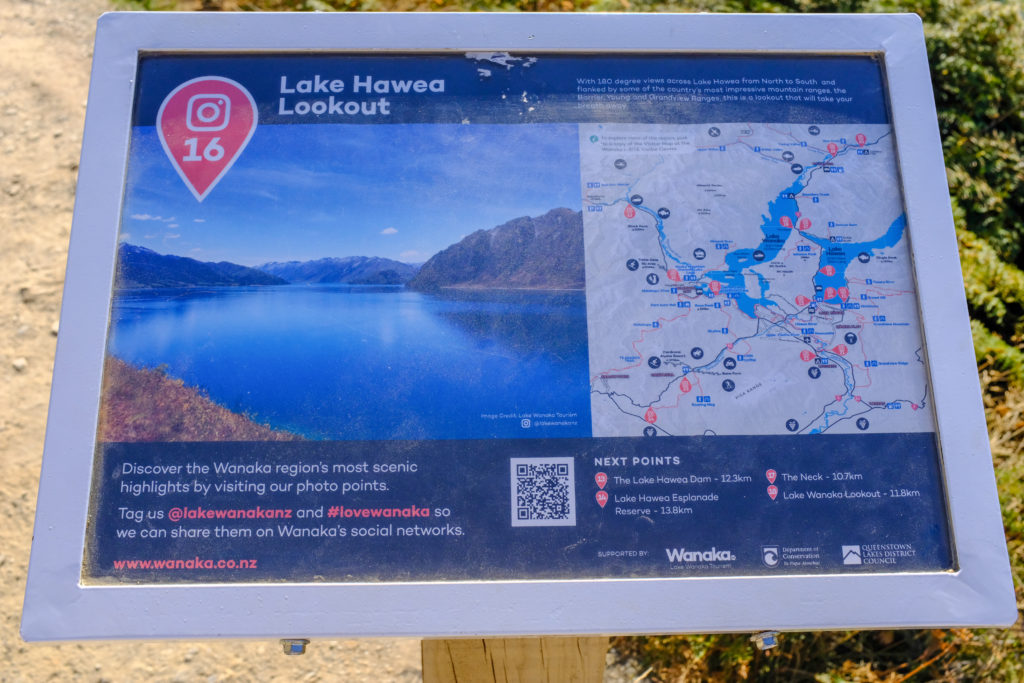
All of this isn’t surprising. New Zealand is an insanely photogenic place, and it’s not an exaggeration to say that there’s a beautiful sight around every corner. Sometimes, it does feel like travel has been simplified to “visual tourism.” When you see something beautiful, you have an urge to capture it. And it’s easy to arrive in a place with expectations of what you want to see, which makes you less likely to just accept what’s in front of you. One of our AirBnB hosts even joked about how one of her guests hiked to a foggy mountain, and then held up a postcard in front of it just to imagine what the view should have looked like.
In the center of the spotlight, there’s a willow tree in a small town called Wanaka. Aged 70 years, it sits by itself in the middle of a lake, with a dramatic backdrop of mountains behind it. It’s so popular on social media (apparently one of the most photographed trees in the world) that it even has a Google Map location, aptly named as #thatwanakatree. When we visited, we knew what to expect: hoards of tourists, cameras ready.
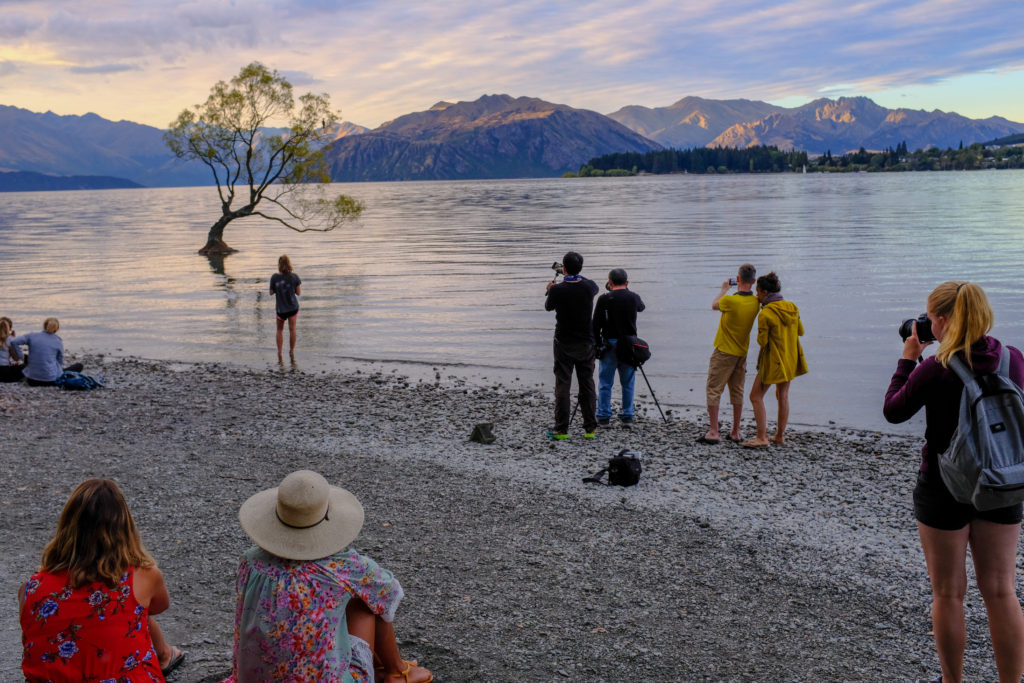
Drawing closer to the beach, that’s exactly what we saw. However, I ended up being pleasantly surprised by what the hoards entailed. I expected it to be a scene of chaos, people jumping into each other’s photos, all trying to replicate the same image. Instead, I found it a soothing environment. It felt like a really peaceful gathering of photographers, waiting for sunset. People were spread out and set up their own unique shots, focused on capturing the tree as they saw it. Others were just appreciating the scene: reading, striking up conversations, having a picnic on the beach, or playing music. My favorite sight was a European guy who set up a camp chair in the middle of the water, adjusting his camera settings on the tripod with one hand while holding a glass of wine in the other. He was taking a long exposure, and whenever the local ducks floated in the water nearby, his friends threw bread to lure them away from the camera.
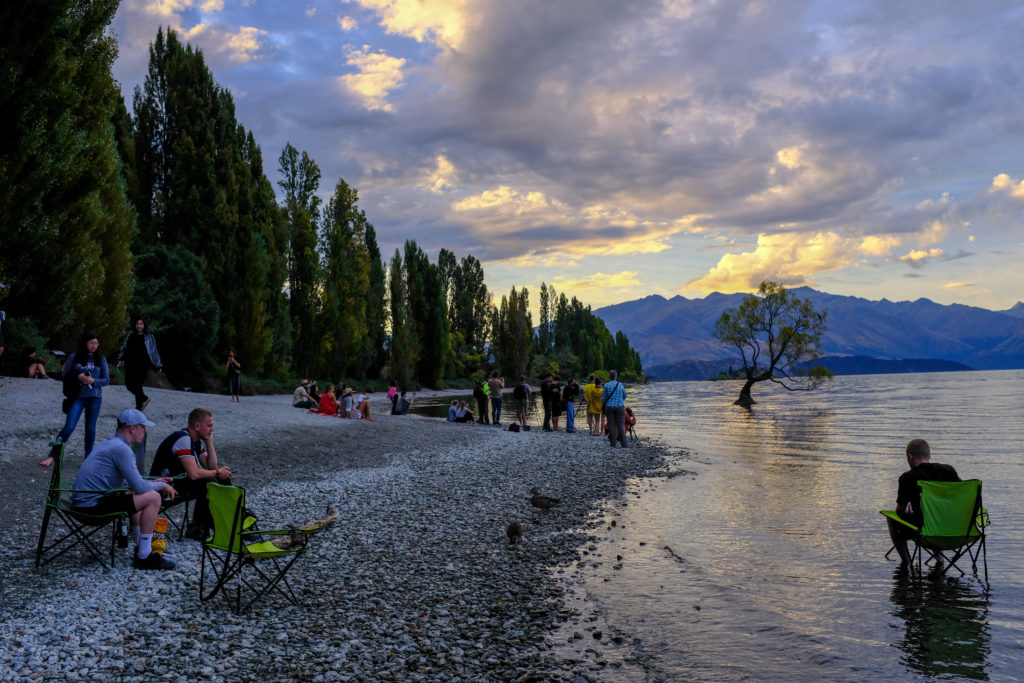
I ended up staying on that beach for much longer than I anticipated. It was less of a quick photo opportunity, and more of an experience to really appreciate. That evening, I was reminded of physical communities created from digital ones, what happens when you translate the online into offline. The water was still, the people were still, and you could hear the crunch of beach pebbles beneath feet and birds chirping in the background. All there at golden hour, together.
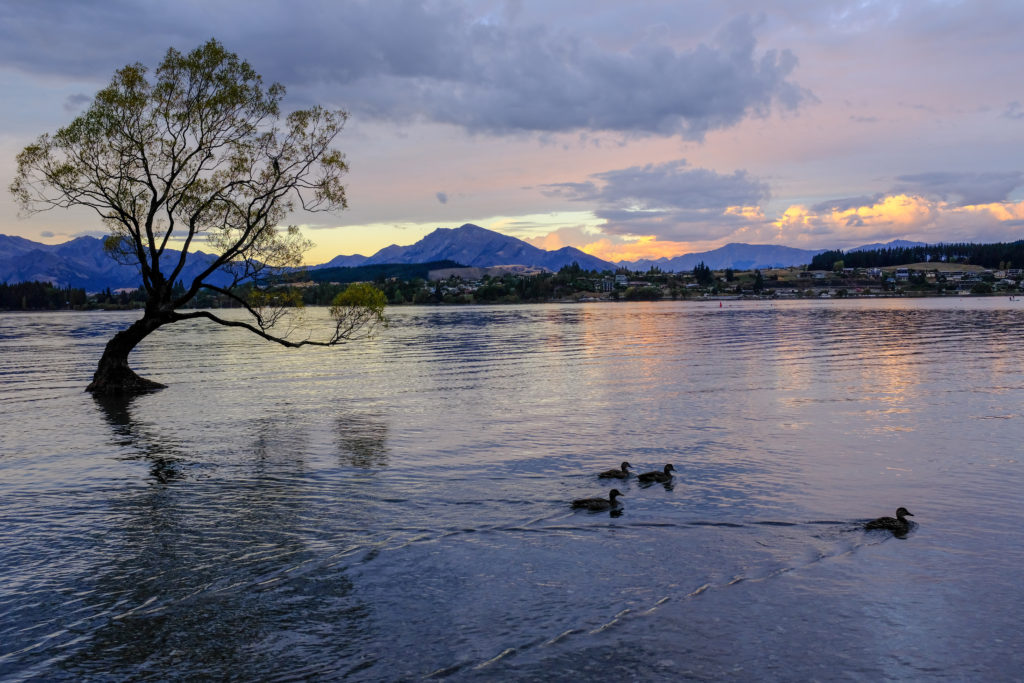
(If you want to read more about trees, check out this article about a broccoli tree in Sweden).

